
You know the feeling. You’ve knocked out what you believe is a good, solid test. You head to pick up your score sheet. When you get it, you melt into a puddle of unhappiness, try to interpret the comments and scores, and scratch your head (or pound it into a wall) because you just don’t understand what happened. Many exhibitors do not know how to interpret a test sheet and use it as constructive criticism. Many are not aware of the all important Purpose of the Level.
When I began training and showing Dressage, I underestimated the size of the learning curve. I started riding and showing when I was 14 years old, had trained and shown professionally, and had instructed students through the National levels in the round ring. I was very successful for a mid-level trainer. I did a nice job; my students won a lot. My heart was not into it. I had issues with the business, both in the judging system and in the way in which horses were treated and valued. Although I had a recently-built barn to pay for, I retired from my life training for the Arabian show ring.
As fate would have it, most of my students (I taught only junior riders), were graduating out of the youth division and giving up their horses to go to college anyway. When an opportunity arose to start learning Dressage, I grabbed it. When I drank the Dressage Kool-Aid, it became apparent that I could no longer train horses for the other disciplines. It’s just that much different. The whole approach and philosophy in Dressage is radically different than how I used to train horses, so I let all my business fall away to pursue Dressage.
I cringe to think about my first shows. I remember questioning my first instructor about what to do if I missed centerline in my test. I asked if I corrected back onto Centerline, or just continued going straight. She looked at me like I had two heads and tersely replied, “Don’t ever miss centerline”.
In the beginning, I looked at the Training Level and First Level tests and thought they didn’t look very hard. I came from a Saddle Seat Equitation background and was familiar with performing individual tests. I believed the important part was performing the test correctly. How hard can a 20-meter circle really be? I was deluded.
I mean, my test was perfect: circles at the correct places, hit centerline, rode straight lines, yet somehow managed to pull out a score in the 50s. I did not understand how to interpret the results.
What I didn’t understand when I began showing, was The Purpose. The Purpose of the level is printed in a small box in the upper left-hand corner of every test sheet. The test sheets are available for free through USDF. The Purpose of the level states the level of self-carriage and balance that is the minimum requirement for the level. Training level, for instance requires that the horse “confirms correct basics, is supple, moves freely forward with a clear rhythm with a steady tempo, accepting contact with the bit.” This is how your horse must perform throughout the entire test. If you are riding a 20 meter, your horse must exhibit these requirements.
In Second Level, the Purpose states: “To confirm the horse has the correct basics, and having achieved the thrust required in First Level, now accepts more weight on the hindquarters (collection); moves with an uphill tendency, especially in the medium gaits; and is reliably on the bit. A greater degree of straightness, bending, suppleness, thoroughness, balance and self-carriage is required than at First Level.”
To sum up, this is how your horse must perform every movement in the test, or you will score low. If your shoulder-in has perfect angle, but your horse is on the forehand, you will get a low score. If your horse slows down instead of collecting for your counter canter work, you will get a low score. If your horse gets longer in its frame for the medium trot instead of sitting and thrusting, you will get a low score.
The Purpose also takes the guess work out of advancing up the levels. Most of us start playing with lateral movements early on in training. That doesn’t mean you start showing Second Level just because you’ve started riding some shoulder-ins. If your horse is not meeting the requirements in connection, balance straightness and impulsion for Second Level, you should not show it and expect great results. It does not matter how nice your horse is or how fancy it moves, the judge’s first obligation is to evaluate how you and your horse perform the test according to the Purpose of the Level.
As I continue this series on interpreting a test sheet, I recommend going to the USDF website and downloading the Dressage section, which includes rules and in-depth descriptions of every movement in every level. It’s free and educational. Showing costs so much time and money. Give yourself a leg up with education.

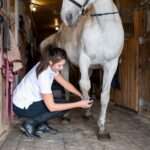

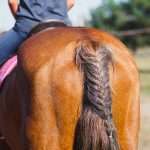

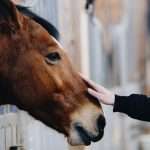
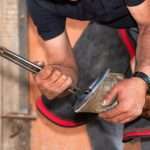



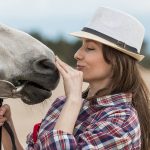
Great read
Superb Products
Buen articulo, Thanks
more clearly impossible.
Good points to keep in mind.
Interesting information. Thanks
Valuable points to note. Great article, BTW.
Interesting article. Thanks for sharing.
These are some good tips. Our horses are our pets.
many good points
the more you know the better
tnx
Very good
Nice article
This is great advice for a beginner that wants to target their training to the criteria
This is a very interesting article.
Great products!
Great read!
many good points
the more you know the better
tnx
Nice article beautiful images
Great article. I shared it to my Twitter.
AWESOME ARTICLE
Riding is great for kids. It really teaches them a lot of discipline.
Animal training is simply fascinating.
I’ve always been interested in horses. Its interesting to read from a different perspective than my own as I am only able to ride occasionally for recreation. Thanks!
Love Dressage
Good to understand what ‘The Purpose’ is.
Always have a purpose….good read